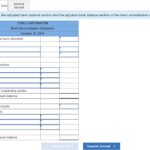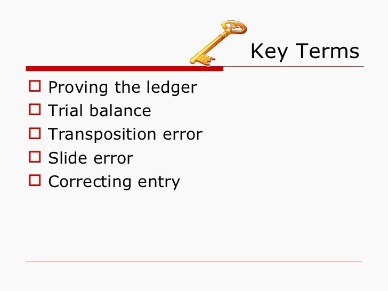
If you need a bookkeeper to take care of all of this for you, check out Bench. We’ll do your bookkeeping each month, producing simple financial statements that show you the health of your business. After you generate your final financial statement, use your statements to track your business’s financial health and make smart financial decisions.
How to Report Prior Period Adjustments in a Cash Flow Statement
You can use an income statement to summarize business operations for a certain time frame (e.g., monthly, quarterly, etc.). You can even use your cash flow statements to create a cash flow forecast or projection. A cash flow projection lets you estimate the money you expect to flow in and out of your business in the future. Forecasting your business’s future cash flow can help you predict financial problems and give you a clear picture of your company’s financial future. Financial statements are prepared by transferring the account balances on the adjusted trial balance to a set of financial statement templates. We will discuss the financial statement form in the next section of the course.
- The sub-ledger accounts are then aggregated into five general ledger categories (income, expenses, assets, liabilities, and equity).
- Think of the unpaid bill that you sent to the customer two weeks ago, or the invoice from your supplier you haven’t sent money for.
- If they don’t, your balance sheet is unbalanced, and you need to find what’s causing the discrepancy between your assets, liabilities, and equity.
- Accrue the expense for any invoices that have not been received.
Step 1: Analyze and record transactions
Notice how the heading of the balance sheet differs from the headings on the income statement and statement of retained earnings. A balance sheet is like a photograph; it captures the financial position of a company at a particular point in time. The balance sheet, lists the company’s assets, liabilities, and equity (including dollar amounts) as of a specific moment in time. After you generate your income statement and statement of retained earnings, it’s time to create your business balance sheet.

Step 6: Reconcile Bank Accounts
You’ll need to subtract gains and add back losses on the sale of assets. Monitoring the cash flow statement helps predict cash flow issues and prepare for them before they turn into net working capital definition a major problem. Balances of current liabilities like accounts payable and long-term liabilities like bonds appear here. Balances of fixed asset accounts like land, current asset accounts like cash, and intangible asset accounts like goodwill appear here. Once you have the closing balance for the retained earnings account, add it to the opening balance of owners’ equity.
According to the rules of double-entry accounting, all of a company’s credits must equal the total debits. In the first step of the accounting cycle, you’ll gather records of your business transactions—receipts, invoices, bank statements, things like that—for the current accounting period. These records are raw financial information that needs to be entered into your accounting system to be translated into something useful.
You may see large companies prepare financial statements following GAAP (Generally Accepted Accounting Principles) and IFRS (International Financial Reporting Standards). Already overwhelmed with the idea of preparing these statements? Consider using financial reporting software to centralize your data and automate most of the reporting process. Financial statements are the business world’s equivalent of a medical check-up. They offer a comprehensive overview of an organization’s financial condition, including details about its profitability, cash flow, and overall worth. Once you’ve made the necessary correcting entries, it’s time to make adjusting entries.
At the end of the accounting period, you’ll prepare an unadjusted trial balance. You don’t have to compute most of the items in the balance sheet. This statement simply lists the balances of your accounts, which you would have calculated before preparing your trial balance.
Print a preliminary version of the financial statements and review them for errors. There will likely be several errors, so create journal entries to correct them, and print how the irs knows you didn’t report income the financial statements again. A balance sheet can then be prepared, made up of assets, liabilities, and owner’s equity.
Now that you know all about the four basic financial statements, read on to learn what financial statement is prepared first. Your total assets should equal your total liabilities and equity. If they don’t, your balance sheet is unbalanced, and you need to find what’s causing the discrepancy between your assets, liabilities, and equity. publication 504 divorced or separated individuals Your assets are items of value and things that your business owns.
Calculate depreciation expense and amortization expense for all fixed assets in the accounting records. When transitioning over to the next accounting period, it’s time to close the books. Missing transaction adjustments help you account for the financial transactions you forgot about while bookkeeping—things like business purchases on your personal credit. In other words, deferrals remove transactions that do not belong to the period you’re creating a financial statement for. There are additional line items in this section as well if you’re using the indirect method.